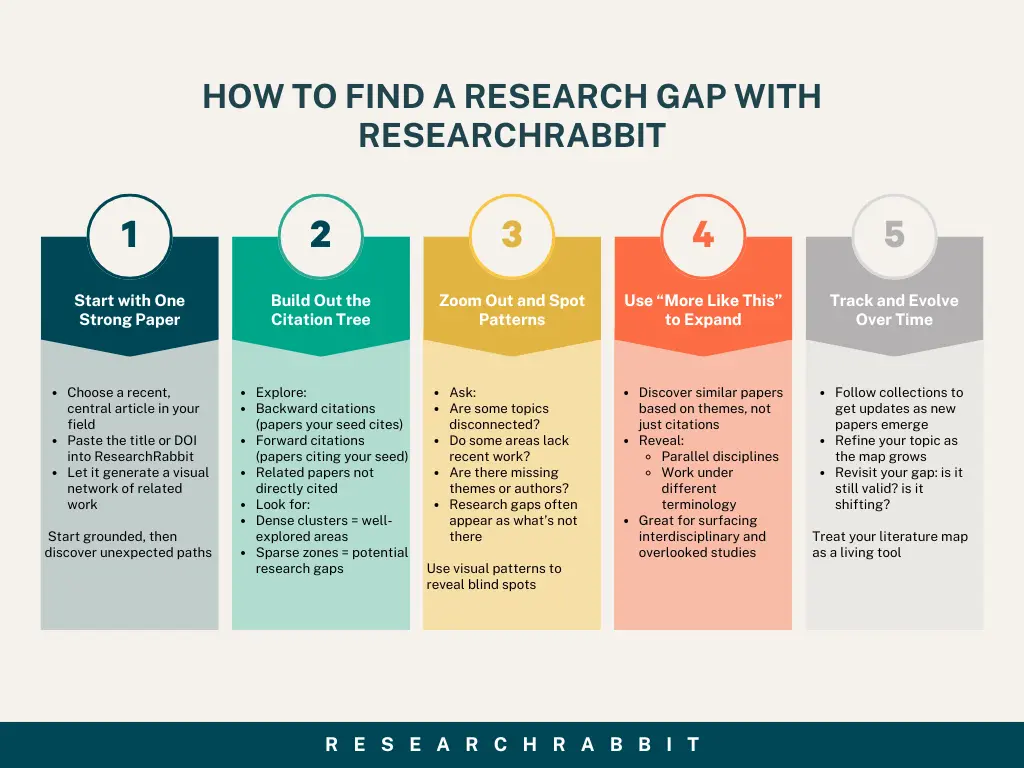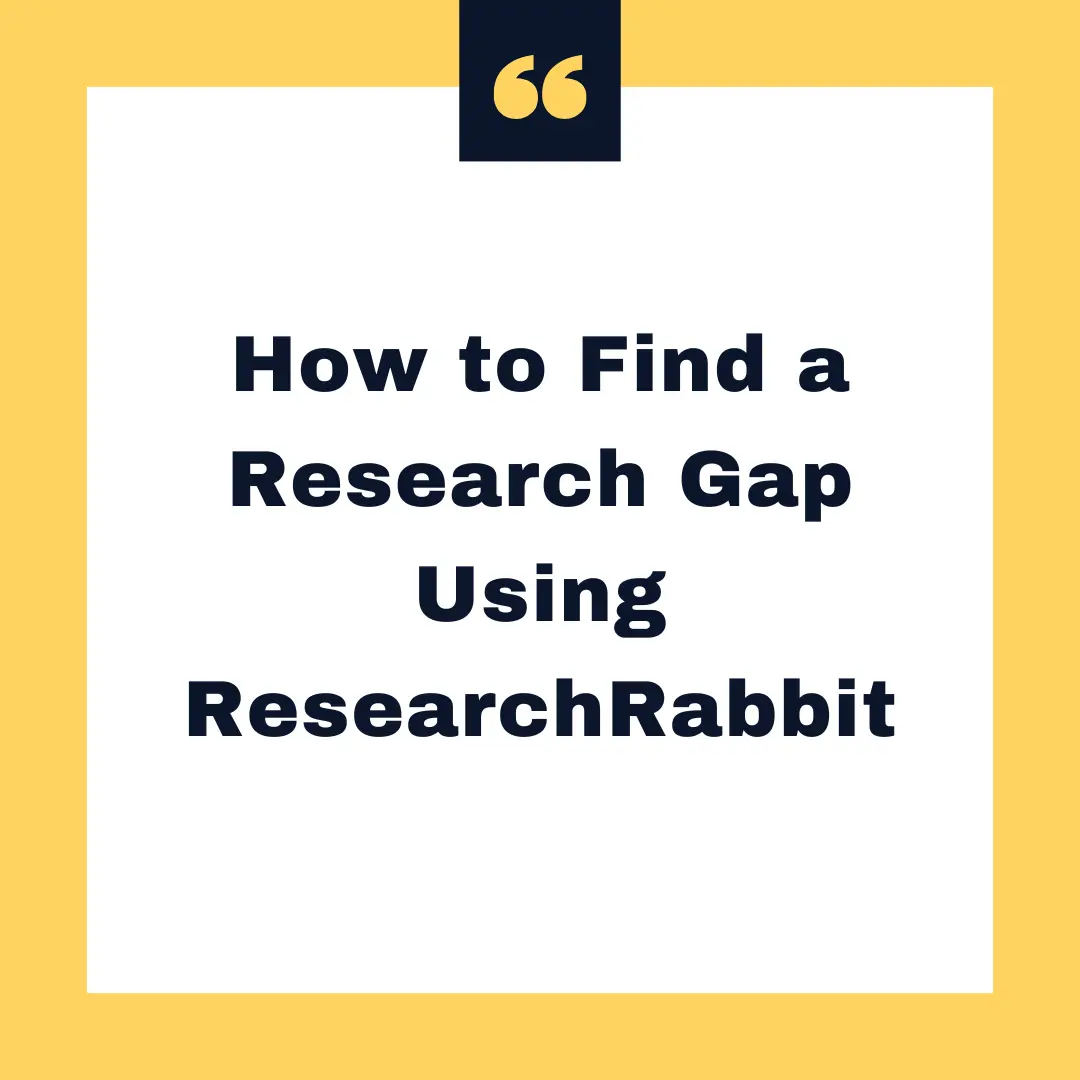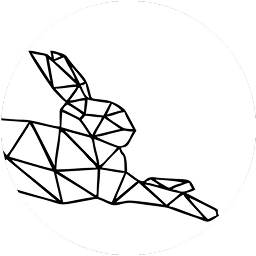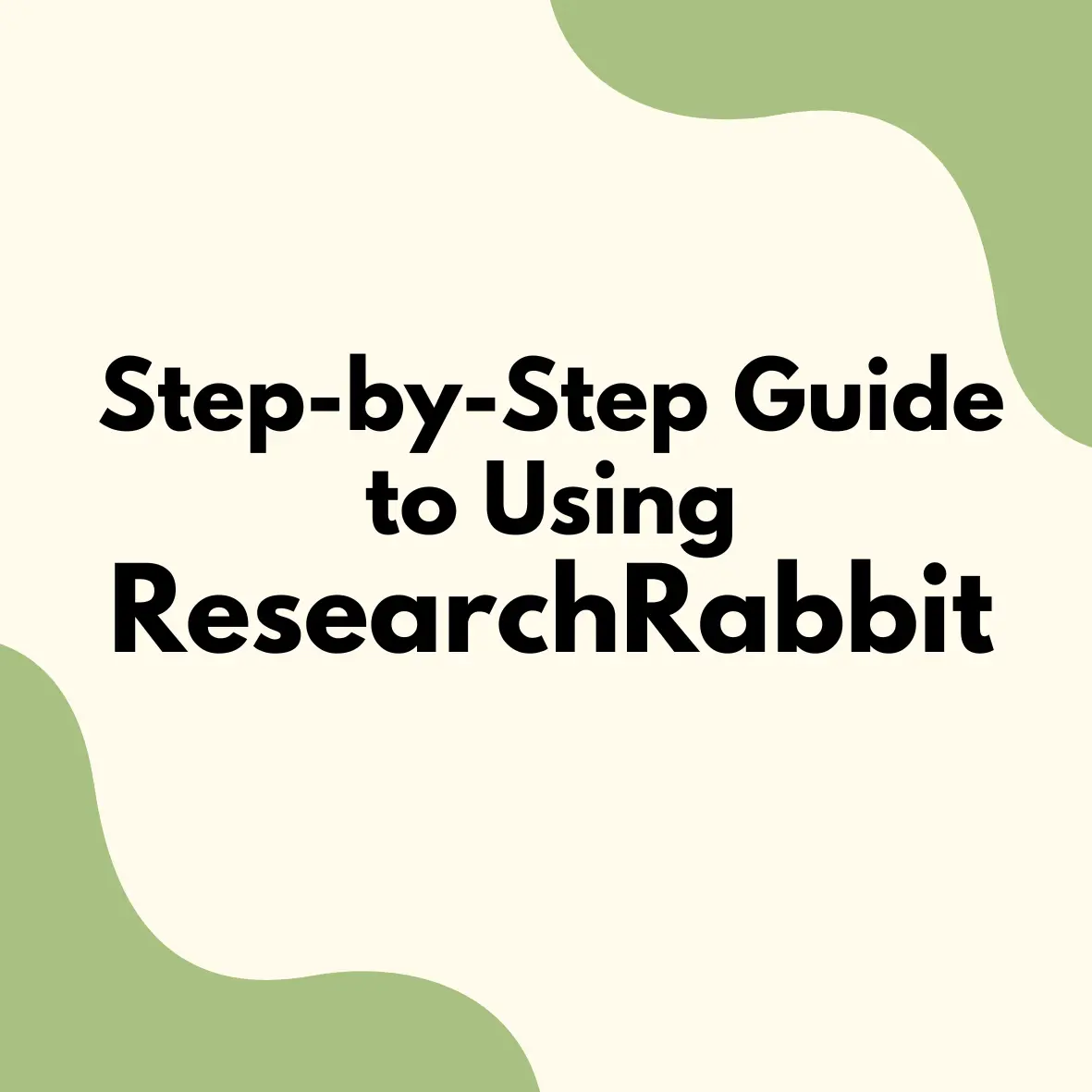In the early stages of any research project, one challenge looms large: How do I find a unique and valuable topic to explore? Whether you’re a postgraduate student, a PhD candidate, or a seasoned academic, identifying a research gap is the key to making a meaningful contribution to your field.
But digging through endless databases, citations, and keyword searches can be overwhelming—and often ineffective. That’s where ResearchRabbit steps in.
ResearchRabbit is a powerful tool that lets you explore the literature visually, uncover hidden connections, and discover where the gaps lie. Instead of relying solely on keyword matching, it helps you see the structure of scientific knowledge, and more importantly, the missing pieces.
In this article, you’ll learn exactly how to use ResearchRabbit to spot research gaps, uncover blind spots in the literature, and develop original research questions that matter.
Let’s dive in.
What is a research gap?
A research gap is an area within the existing academic literature that hasn’t been fully explored, resolved, or connected. It might be:
- A topic with few or outdated studies
- A contradiction or inconsistency in existing findings
- A research question that remains unanswered
- A population, setting, or method that is underrepresented or overlooked
Spotting a genuine gap means you’re not just adding another paper to the pile, you’re contributing new insight to your field. This is what makes your research valuable, original, and worth publishing.
Why finding a research gap is crucial
Before you dive into writing a thesis, submitting a paper, or launching a research project, one critical question must be answered: What hasn’t been done yet?
Identifying a research gap helps ensure your work is both relevant and innovative. It increases your chances of getting published, securing research funding, and making a real impact in your field. Whether you're a graduate student or an experienced academic, gap-spotting is an essential skill.
The problem? Traditional academic search tools like Google Scholar and Scopus often show you what's already known, but not what's missing. They rely heavily on keyword matches and can overlook connections across disciplines, new trends, or isolated studies.
That’s where ResearchRabbit comes in. It helps you move beyond static search results by visualising connections, spotting disconnections, and uncovering gaps that keyword searches often miss.
What makes ResearchRabbit different?
Unlike traditional academic databases that rely heavily on keyword searches and static lists of results, ResearchRabbit offers a dynamic, visual approach to literature discovery. It allows you to explore citation networks across time and topic, revealing how ideas evolve and connect. By surfacing related papers that may not share exact keywords—but are conceptually or thematically linked—ResearchRabbit helps uncover relevant research you might otherwise miss. You can also follow evolving collections, making it easier to stay up-to-date as new literature emerges. Most importantly, ResearchRabbit highlights clusters of well-developed work, as well as outliers or disconnected studies—clues that often point to under explored or overlooked research gaps. Think of it as your always-on, AI-powered research assistant.
Step-by-step: How to find a research gap with ResearchRabbit
So, how exactly can you use ResearchRabbit to uncover research gaps that others have missed? Below, we’ll walk through a step-by-step approach—from seeding your initial search to building a dynamic literature map and identifying under explored areas. Whether you're starting a literature review, developing a thesis topic, or exploring new ideas, these steps will help you move from scattered papers to strategic insights.

1. Start with one good paper
Begin your exploration with a strong “seed” paper—one that is central to your topic, recent, and published in a reputable journal. This article acts as a starting point from which you can grow your entire research map. Simply paste the title or DOI into ResearchRabbit, and the tool will begin constructing a visual network of related work. Starting with a known paper helps ground your search in something familiar, while letting ResearchRabbit guide you toward newer, more surprising directions.
2. Build out the citation tree
Once your seed paper is in the system, ResearchRabbit automatically generates a citation tree—showing both backward citations (papers your seed cites) and forward citations (papers that cite your seed). You’ll also see thematically related work that may not be directly cited. As your map expands, you’ll begin to notice clusters forming—areas of dense research activity—as well as sparse regions with little to no connection. These sparsely connected areas can often signal where a research gap exists, especially if they relate to your topic but haven’t been thoroughly explored.
3. Zoom out and look for patterns
After building out your map, take a step back and look at the broader picture. Ask yourself: Are there papers that seem relevant but aren't well connected to others? Do some topics cluster heavily while others stand alone? Are certain concepts missing entirely from the network? ResearchRabbit allows you to zoom in and out, revealing high-level trends and potential blind spots. Often, gaps reveal themselves not through what is present—but through what’s missing or disconnected. This kind of visual insight is hard to achieve with text-based search tools alone.
4. Use the “more like this” feature
One of ResearchRabbit’s most powerful tools is its ability to suggest papers based on content similarity—not just citation behaviour. Clicking “More Like This” expands your search based on thematic overlap, helping you discover papers from parallel disciplines or under different terminology. For instance, if your research focuses on “virtual assistants in healthcare,” you might uncover relevant work on “embodied conversational agents” that doesn’t share the same keywords. This feature is ideal for surfacing interdisciplinary connections and identifying novel topic intersections that represent true research opportunities.
5. Track and refine your research gap over time
Finding a research gap isn’t a one-time task—it’s an ongoing process. ResearchRabbit makes it easy to evolve your thinking by allowing you to follow collections. As new papers are published, ResearchRabbit updates your collections automatically, ensuring you don’t miss emerging work in your area of interest. You can refine your research focus over time, add or remove papers, and watch how your map reshapes itself in response. This iterative process helps you validate the relevance of your gap and adjust your literature review strategy as the academic landscape shifts.
Example research gap scenarios
If you're new to research, the idea of a "gap" in the literature can feel vague or abstract. To make things clearer, here are some realistic scenarios that show what a research gap might look like when you're exploring papers in ResearchRabbit:
Conclusion
Finding a research gap isn’t just about digging deeper—it’s about looking at the research landscape from a new angle. ResearchRabbit empowers you to do exactly that. By visualising how ideas, authors, and papers connect (or don’t), it helps you uncover patterns that traditional search tools often miss. You’re not just building a static list of sources—you’re creating a living, evolving map that reveals both well-trodden paths and unexplored territory. Whether you’re drafting a literature review, refining your dissertation topic, or planning a grant proposal, ResearchRabbit gives you the tools to ask the most important question in research: What’s missing?
🎯 Ready to explore the unknown?
Start using ResearchRabbit today to uncover research gaps, stay ahead of the curve, and shape the future of your field.
FAQ
- Do I need a paid account to use ResearchRabbit?
No. You can explore citation networks and build collections with the free version.
- Can I use ResearchRabbit for any academic field?
Yes. ResearchRabbit supports a wide range of disciplines, including STEM, social sciences, and humanities.
- How do I know my research gap is valid?
Validate it by combining visual cues in ResearchRabbit with manual searches on databases like Google Scholar or Scopus. Look for recency, relevance, and consistency in the gap.
- Can I export or share my citation maps?
Yes. You can export collections, download citations, and share maps with collaborators or supervisors.




%20(800%20x%201036%20px).png)



This is a big test comment on your article.